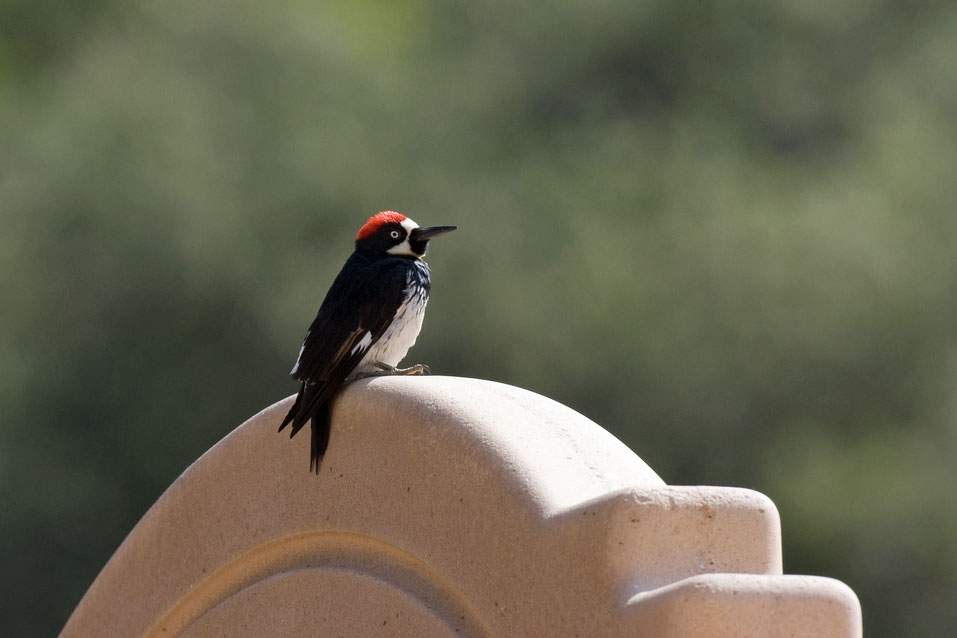
As you walk through almost any wooded area in North America or Europe, you can hear the quick staccato sound of a woodpecker drilling into trees.
Strong Birds
Woodpeckers use their long, pointed beaks to drill holes in trees, ant-holes, or other structures. They gather food from the holes with their extremely long tongues, which are often longer than their beaks. When not in use, the woodpecker's tongue is stored in a special tube that runs under the lower jaw, down the neck, and back up to the top of the skull.
The woodpecker's tail and feet are designed to make pecking easier. A strong feather shaft in the center of the woodpecker's tail helps the bird maintain its upright position on the tree trunk. Like other birds, the woodpecker has four long, sharp claws on each foot. But the woodpecker has two claws on the back of each foot, where most birds have only one. This extra rear claw helps the woodpecker stand upright on a tree for long periods of time.
Why don't woodpeckers get headaches?
The secret lies in the construction of the woodpecker's head and neck. A pad of soft tissue located between the bird's beak and skull absorbs most of the shock of each blow. The woodpecker's brain almost fills the skull cavity, which minimizes jostling. The brain is further stabilized by a strong muscle that runs down the sides of the neck and up the back of the skull.









